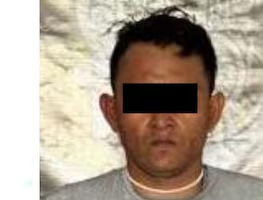Más Información

Ramírez Cuéllar propone una Cumbre urgente entre México, EU y Canadá; legislador busca fortalecer unión de América del Norte

Detienen a persona vinculada al homicidio del magistrado Edmundo Román Pinzón; Fiscalía de Guerrero continúa con las indagatorias

Sheinbaum entrega tarjetas Pensión Mujeres Bienestar en Morelos; más de 16 mil derechohabientes serán beneficiadas

PAN cuestiona precio de la gasolina; "es un golpe directo al bolsillo de las familias mexicanas": Jorge Romero

Consulados de México en EU implementan acciones de apoyo a connacionales; inauguran primera ventanilla de salud en Cleveland
In order to facilitate search missions of human and canine rescuers in debris caused by earthquakes, students of the National Polytechnic Institute (IPN) created the compact explorer Heiland , which means " savior " in German.
This prototype, capable of detecting the presence of living beings trapped in the rubble, was developed at the Center for Scientific and Technological Studies (CECyT) 9, "Juan de Dios Bátiz," to assist in rescue missions.
According to a statement, its structure consists of two boxes attached by the center, similar to the body of ants, and a camera that sends FPV (First Person View) images in real time.
Itzeli Camacho Vargas, Abril Suárez López, Gerardo Huerta Pérez, Eduardo Salmerón Sánchez, and José Sánchez Ramírez
, creators of the explorer robot, explained that the prototype has an infrared PIR sensor (Passive Infrared Sensor), which detects the body heat of people or animals at a distance, even if they cannot be seen by the camera.
In addition, Heiland has a Hall effect sensor to measure the distance it must travel and an MPU that combines an accelerometer with a gyroscope , which allows it to stabilize in case of a fall.
The prototype uses the Arduino Mega electronic platform to which the sensors are connected and programmed, and to direct it remotely, radio frequency modules were placed, both in the robot and in the joystick-type remote control, with forward, reverse, and rotation functions for both sides, with a radius of 100 meters .
It is possible to visualize everything that the robot sees on its way from a screen placed on the remote control, in which a liquid crystal screen or LCD was installed with data such as the name of the project and all the team members.
However, the students assured that they could eventually develop an interface to obtain information from the search as well as the number of people found.
Advised by professor Erick Asiain de la Luz , the students built a resistant prototype of fiberglass and rims made of Nylomaq , in order to support a compression of up to 200 kilograms .
Some of the improvements that they plan on adding to the prototype are the development of a mobile application to control Heiland from a cell phone or tablet, and the incorporation of a gas sensor to detect possible leaks and semi-automate it with specific maneuver buttons.
dm






